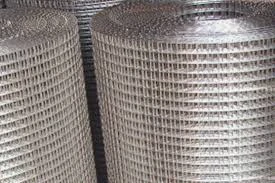dec . 25, 2024 07:29 Back to list
Durable Wire Mesh Options for Constructing Bird Cages and Aviaries
The Importance of Wire Mesh for Bird Cages
When it comes to providing a safe and comfortable environment for pet birds, the choice of materials is crucial. One of the most significant components of a bird cage is the type of wire mesh used. Wire mesh not only serves as the structural integrity of the cage but also impacts the overall well-being of the bird. This article will discuss the various types of wire mesh suitable for bird cages, their benefits, and important considerations to keep in mind when selecting the right mesh for your feathered friend.
Types of Wire Mesh
Wire mesh for bird cages comes in several varieties, primarily differentiated by the material used, thickness, and mesh size
. Common materials include stainless steel, galvanized steel, and aluminum.1. Stainless Steel Mesh This type is often considered the best for bird cages due to its durability and resistance to corrosion. Stainless steel will not rust, ensuring the cage remains safe and structurally sound for years. Additionally, it is non-toxic, making it a suitable choice for birds that may chew on the mesh.
2. Galvanized Steel Mesh This mesh is coated with zinc to prevent rust. While it is more affordable than stainless steel, it is vital to ensure that the zinc is of high quality and that the bird does not have prolonged contact with it, as zinc can be toxic in high quantities.
3. Aluminum Mesh Lightweight and rust-resistant, aluminum mesh is another popular option. While it may not be as sturdy as stainless or galvanized steel, it is a great choice for smaller birds or less aggressive species.
Mesh Size and Spacing
wire mesh for bird cage

Choosing the right mesh size and spacing is essential for ensuring the safety of your pet. The spacing should be narrow enough to prevent the bird from escaping or getting stuck. Generally, smaller birds like finches and canaries require a mesh size of 1/2 inch or smaller, whereas larger birds, such as parrots, may need a spacing of 3/4 inch to 1 inch.
Moreover, the thickness of the wire is important. Thicker wires are harder for birds to break, preventing escape attempts and enhancing overall safety. For larger, stronger birds, opt for a minimum wire thickness of 14 gauge, while smaller birds can be safely housed in cages with a 16 or 18-gauge mesh.
Benefits of Using Wire Mesh
One of the primary benefits of using wire mesh in bird cages is its visibility. Birds are naturally curious creatures, and a well-structured cage allows them to see their surroundings, providing mental stimulation. This visibility also facilitates interaction between birds and their owners, fostering a stronger bond.
Additionally, wire mesh cages are much easier to clean than solid cages. Droppings and debris can fall through the mesh, simplifying maintenance and promoting a hygienic living environment. The airflow provided by wire mesh also helps maintain a comfortable temperature and reduces humidity—a vital aspect for the health of birds.
Conclusion
In conclusion, selecting the appropriate wire mesh for a bird cage is crucial for the safety and well-being of your pet. By considering the type of material, mesh size, and spacing, pet owners can create an inviting environment for their feathered companions. Whether you choose stainless steel for its durability or aluminum for its lightweight properties, ensure that your cage meets the specific needs of your bird. With the right wire mesh, you can provide a secure, stimulating, and hygienic home for your avian friend, allowing them to thrive and enjoy their lives to the fullest.
-
Weather Resistance Properties of Quality Roofing Nails
NewsAug.01,2025
-
How Galvanised Iron Mesh Resists Corrosion in Harsh Environments
NewsAug.01,2025
-
Creative Landscaping Uses for PVC Coated Wire Mesh Panels
NewsAug.01,2025
-
Common Wire Nail Dimensions and Their Specific Applications
NewsAug.01,2025
-
Choosing the Right Welded Wire Sheets for Agricultural Fencing
NewsAug.01,2025
-
Anti - Climbing Features of Razor Wire Barriers
NewsAug.01,2025









